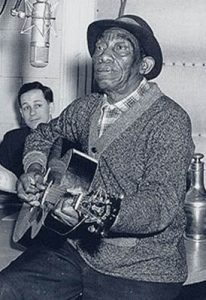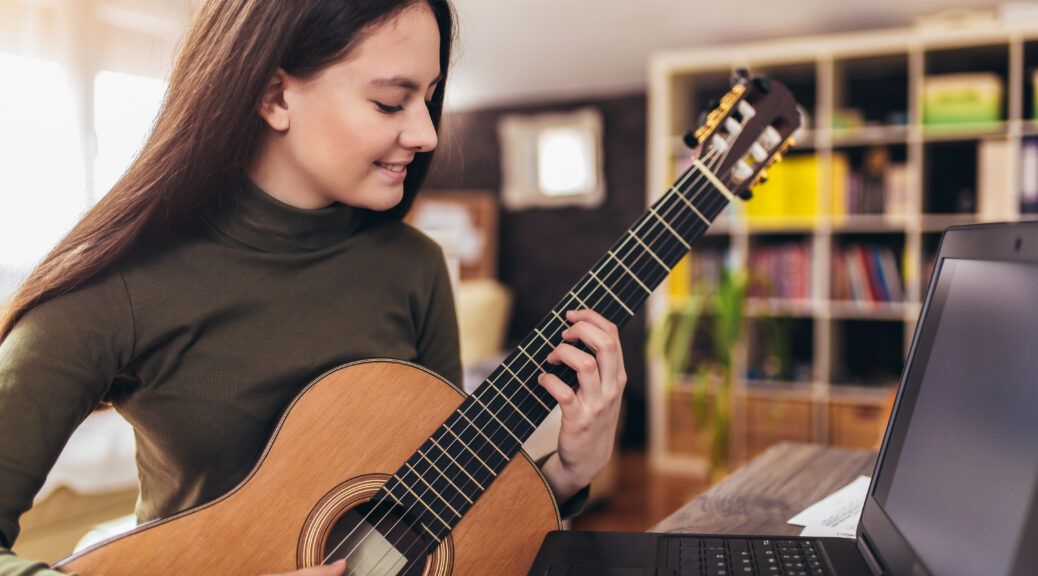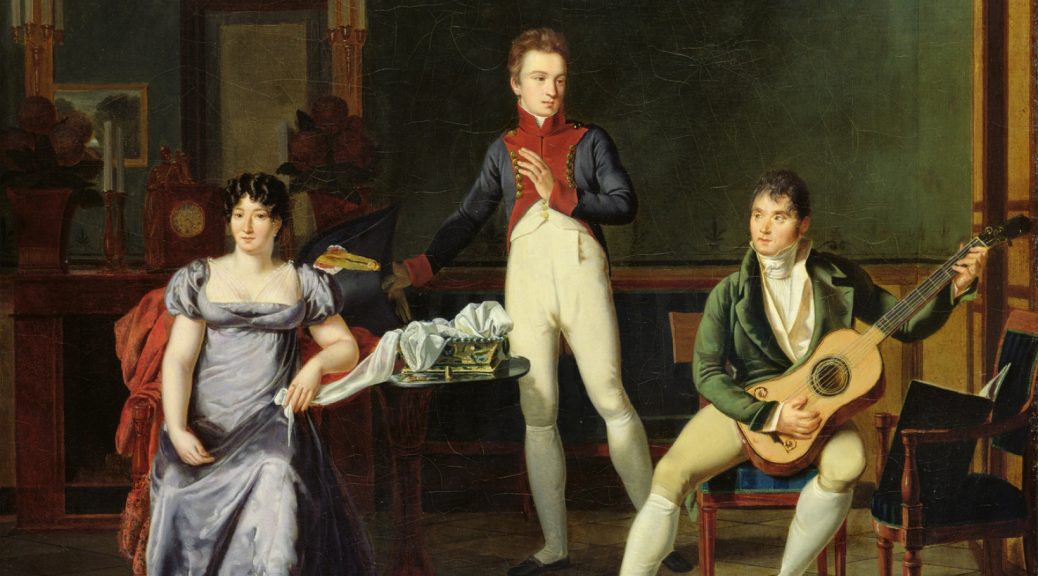Online guitar Lessons via Skype, Facetime, or Zoom
Due to COVID-19 pandemic, all guitar and music lessons at Huber Guitar Studio will take place online via Skype, FaceTime, or Zoom. Enjoy the same quality guitar lessons from the comfort of your home!
In these difficult times we’ve all had to make major adjustments to our daily lives, but with the struggle also comes opportunity. My students who were taking in-person lesson have switched over to online guitar lessons without a hitch, and many have used their new found time to accelerate their guitar playing skillset. It’s an exciting time to be a guitar player and I’m thrilled to help you on your journey! Sign up today and I’ll get you on the right track we’ll develop a practice routine that suits your needs!
Visit our online scheduler to see what times are available or call/text Dave at 410-960-4436!

Guitar Lessons Tailored to Your Needs!
Custom Guitar Lessons, Tailored to Your Needs
Whether you’ve been playing guitar for years or are just starting out, personalized, one-on-one guitar lessons at Huber Guitar Studio will put you on your own path to excellence with guitar.
At your first lesson, I will sit down with you to find out where you are with your guitar playing and where you would like to go. As we go along, I hope to find out how you work best so we can develop a solid practice routine. From my many years of teaching guitar, I’ve seen that each student has different strengths, musical interests, and time frames to work with, so I hope to learn a lot about you so I can tailor the lessons to meet your needs.
If you are brand new to playing guitar, we’ll start at the beginning, but it’s important to have an idea, even at the very early stages, of your overall expectations and of what style of music you’d like to focus on. It can give you a lot more motivation, if you have some specific goals in mind!
If you’ve been playing for a while and want to take your guitar playing to the next level, I will assess all the aspects of your playing, then ask you about where you’d like to be as a guitarist and about any difficulties in the past that you’ve encountered as well as what you like the most about playing music and guitar. My goal is to get feedback from you so that we’ll be moving in the direction that feels right for you.
I aim to make my guitar lessons as enjoyable as possible and I hope that after each lesson you’ll feel like you’ve learned something new and will feel motivated to keep your guitar playing moving forward!
Huber Guitar Studio Student Recital – Summer 2019
Twice a year, in the winter and summer, Huber Guitar Studio hosts a student recital downstairs in the eclectic parlor room of the James E. Hooper House. This past July, students had a chance to polish up their songs and perform them in front of family, friends, and fellow students. We had quite a range of guitar music from Led Zeppelin to Mississippi John Hurt to Astor Piazzolla, a great mix of music! We all had a chance to mingle afterwards, enjoy refreshments, and talk about music and guitar. All students are encouraged to participate to develop performance experience.



Now located in the Old Goucher/Charles Village neighborhood!
In March of 2017, Huber Guitar Studio moved from Hampden to the Old Goucher Historic District of lower Charles Village. Old Goucher gets its name from its proximity to the original Goucher College buildings along St. Paul St which are currently occupied by the Baltimore Lab School. We’re located on the 3rd floor of the James E. Hooper House, which is listed on the National Register of Historic Places, at 100 E. 23rd St.
There several music and arts related offices and studios in the building. Morphius Records, a record label and CD/Vinyl manufacturing and distribution service, is located on the first floor and Lord Baltimore Recording Studio is in the basement. The building also houses a photography studio, a massage therapist, and a custom bike repair shop.
Parking for Huber Guitar Studio has been much improved since we moved from Hampden! Students and parents can find parking on the parking lot adjacent to the building, or 23rd St and St Paul St.
Above is a glimpse inside the studio where the guitar lessons take place. Below is the waiting area.


Learn to Arrange Songs for Guitar at Huber Guitar Studio
Have you ever wanted to play a song on the guitar, but couldn’t find any decent TAB, video, or sheet music to learn to play it? Or you found some TAB or sheet music, but it didn’t capture the whole song or the hook of the song? Maybe you want to play a song on the guitar where the original recording has no guitar at all and come up with your own version of the song. In all of these cases the issue is how to arrange songs for solo guitar or how to arrange a solid guitar accompaniment for singing along.
What is song arranging?
Song arranging is a reworking of a piece of music so it can be played by a different instrument or combination of instruments, or a musical reconceptualization of a previously composed work. As a guitar teacher, part of my job is to help students learn to arrange pop, rock, jazz, and folk songs to meet their skill level and instrumentation needs.
How to arrange songs for voice and guitar
Arranging songs for voice and guitar is a bit easier skill-wise for the guitarist than arranging for solo guitar (see below), but can still be a challenge when trying to distill a full band arrangement down to voice and guitar. Certain choices have to be made by examining the whole song and not just the guitar parts. This includes possibly listening to the bass, drum, and keyboard parts to identify the overall groove (rhythm) of the song. Frequently a rhythm guitar part on a recording may be perfect in a full band arrangement, but it may not be right for solo voice and guitar. Sometimes you may need to simplify the guitar accompaniment to make it easier to sing along with, or you might want to embellish the rhythm guitar to suit the song and make it more interesting.
How to arrange songs for solo guitar
One of the more challenging feats for a guitarist is to create a chord-melody arrangement of a song for solo guitar where the chords and melody are played at the same time. There are several ways to accomplish this on guitar:
- Place the melody in the higher register (1st or 2nd String) and play the chords on the strings below at the same time. This is sometimes known as “Jazz Chord Melody”
- Strum the chords in the spaces between the melody note, known as Folk or “Carter Style” strumming.
- Imply the chords with a bass line played by the right hand thumb and play the melody with the right hand fingers (Folk-Blues Finger-style or Travis Picking.)
- Using a mix of all of the above!

Learn to create your own arrangement!
It goes without saying that the best cover songs are the ones that don’t try to replicate the original as much as ones that cast a new light on the song by creating a new take on it. As an artist, I always try to keep that in mind when working with students to create a new song arrangement. Learning to arrange songs and rework them to meet your own skill-set and ideas is a demanding process, but also very illuminating and can vastly improve your musicianship!
Click on the “schedule now” button to view the available lesson times and schedule a guitar lesson today!
5 Best Guitar Practice Habits
As it is important for students who want to get the most out of their guitar lessons to have long term goals about what they want to achieve as guitar players, it is equally important to develop great practice habits to ensure success. A practice routine is one of the most important parts of learning an instrument. Even after you’ve achieved a certain level of success, it’s important to still practice new concepts to maintain your chops! Here are five practice habits that I feel will greatly improve your chances of success at guitar!
- Practice a piece of music, a riff, a lick, etc, slowly and correctly, the first time.
It’s important to make sure that you’re practicing your music with the right notes, rhythm, and fingering at the outset in order to keep you from having to relearn it later. You want to be sure that you’re not practicing mistakes and putting them into muscle memory, which makes it tough to break out the mistake. This will save a lot of time. Practice your music slowly, double-check the rhythm, and listen to a recorded version of the piece several times. If what you are playing doesn’t sound like the recording, then you need to find out the issue before you practice it over and over.
2. Practice a minimum of 15 minutes a day
This one I tell my students all of the time and the ones that abide by this guideline do better than the ones who don’t. Practicing a minimum of 15 minutes everyday forces you to pick up the guitar like the pros do, and streamline your practice session. Daily practice helps you remember the concepts and techniques far more than a marathon practice on a single day. Most people have 15 min free at some point in their day. When you only have 15 minutes to practice, you better make sure that you stay focused on the task at hand. Be sure to set a timer and when 15 minutes is up, stop!
3. Plan out what you are going to practice.
For this it is good to have a log-book of some kind to keep track of what you’ve been practicing. Often times we’ll cover a variety of concepts in the guitar lessons and you want to make sure that you get to them all during the week or so between your lessons. It’s a great idea to plan out a week of 15 min practice sessions so that you are sure to cover all the new concepts and whichever old ones that are necessary.
4. Practice in 15 minute increments.
This goes right along with the previous two habits. If you decide to practice longer than 15 minutes on certain days, it is still a good idea to break down your practicing into 15 min blocks of time so that you’ll be sure to take a break and move around between blocks as well as stay focused on what needs to be done to move your playing along.
5. Practice the difficult passages of a piece of music more often than the easy parts.
I have found this habit to be a great time-saver. Look over your piece of music and identify what passages are causing you the most trouble, circle them on the page, or if you’re learning by ear, write down the time that the trouble spots occur in the music. Practice only those passages during your practice session, then try the whole piece.
I hope this helps jumpstart your guitar practice and I hope to have more practice tips on this blog in the future!
~Dave
25 songs for beginner guitarists
So you’ve just decided to start playing guitar, or you’ve tried to learn before and you didn’t get past the first few pages of Mel Bay’s Guitar Method book 1. I don’t blame you. While I have absolutely nothing against Mel Bay (one of the biggest publishers of guitar books), starting with a method book, while informative, may not be the best approach to keep your interest at the early stages.
While there are many great beginner choices, I’ve decided to go with songs that are relatively easy to play and are popular. So you can get a lot of mileage out of these. I’ve omitted “Smoke on the Water” for reasons you can imagine! I’ve also chosen tunes that are in a variety of genres so as a budding guitarist you can be versatile in your playing. I hope to expand on each genre in subsequent posts.
Here they are, in order of easy to more challenging:
- Jambalaya on the Bayou – Hank Williams – (Country)
- Horse With No Name – America – (Classic Rock)
- Eleanor Rigby – The Beatles – (Rock)
- Seven Nation Army – The White Stripes – (Rock)
- (I Can’t Get No) Satisfaction – The Rolling Stones
- Knockin’ on Heaven’s Door – Bob Dylan – (Rock)
- Peggy Sue – Buddy Holly – (Rock’n’Roll)
- Old Joe Clark -Traditional – (Bluegrass/Old Time)
- Yellow Submarine – Yellow Submarine – (Rock)
- Hallelujah – Leonard Cohen/Jeff Buckley – (Folk-Rock)
- Folsom Prison Blues – Johnny Cash – (Country)
- Sweet Home Chicago (basic version) – Robert Johnson – (Blues)
- Wagon Wheel – Old Crow Medicine Show -(Bluegrass)
- You Ain’t Goin’ Nowhere – Bob Dylan – (Folk-Rock)
- Redemption Song – Bob Marley – (Reggae)
- Good Riddance (Time of Your Life) – Green Day – (Rock)
- One – U2 – (Rock)
- About a Girl – Nirvana – (Grunge Rock)
- Smells Like Teen Spirit – Nirvana – (Grunge Rock)
- Wish You Were Here – Pink Floyd – (Rock)
- Sittin’ on Top of the World – Various Artists – (Blues)
- Thinking Out Loud – Ed Sheeran – (Pop/Rock)
- Malagueña (Flamenco)
- Blue Monk – Thelonius Monk -(Jazz)
- Blackbird – The Beatles – (Rock)
There are many many other songs I could list here, but hopefully these will spark some ideas. The tunes above will be easy in their original key. With a lot of songs, you can make them easier by changing the original key to G or C, simplifying the strum pattern, and/or simplifying the chord voicings.
Sign up for a guitar lesson today!
To Read or Not to Read Music
Should I focus on learning to read music in standard notation for guitar?
Learning to read music will open many doors in learning guitar, but it is not required to play the instrument and become an effective player. Learning to read standard notation will make you better able to communicate the language of music, and help your ability to learn pieces faster, but like anything in music, it takes time and consistent practice to get efficient at it. It can be difficult in the beginning if you’ve never read standard notation before, which is why I don’t push my students to learn to read music in the beginning stages. There are plenty of guitar techniques to master that don’t necessarily require reading music, but I do instruct students to learn to read rhythms, tablature, and the note names on the fretboard.
It is true that many great guitar players are not great readers of standard musical notation, or do not read music at all. This is in part due to the fact that modern guitar player has a few other tools other than standard notation at his or her disposal to communicate how to play a piece of music: By ear (audio), by sight (video), and tablature.
Here are the pros and cons of each:
- By ear (audio)
- Pro: develop your listening and ear training abilities
- Con: It can be tough for beginners and intermediate players without any ear training or music theory background
- By sight (video and audio)
- Pro: a little easier than learning from only the audio, you are able to see exactly where to play the notes and chords.
- Con: Still tough for beginners and can be frustrating.
- Tablature:
- Pro: Know exactly where on the fretboard to play the notes
- Con: Often tablature does not convey the rhythm, so you often have to figure that out by ear.
As I mentioned above, tablature is more specific in that it tells you exactly which frets to play the notes or chords. When something is written in standard notation for guitar, unless it conveys which position to play, you have a few options of where to play the notes on the neck. Tablature takes out the guess-work and in general it is easier for most people to read.
I highly encourage my students to explore all the ways to learn music on the guitar: sight, sound, tablature, and standard notation. Doing so will make you a well-rounded, effective guitar player and musician!
Group Guitar Lessons
Learn guitar with friends and neighbors of a similar playing ability level at Huber Guitar Studio!
Huber Guitar Studio offers small group guitar lessons for beginner and intermediate players. Groups are usually 2 to 3 people.
- Learn guitar in a fun, friendly environment and meet fellow guitar players in the Baltimore area.
- Learn songs together and learn how to play along with other musicians.
- Observe and learn from fellow students on how to tackle problems with learning guitar.
- Get more time with the instructor at a lower cost!
Group Rates are $20/person for a half hour and $30/person for an hour lesson.













